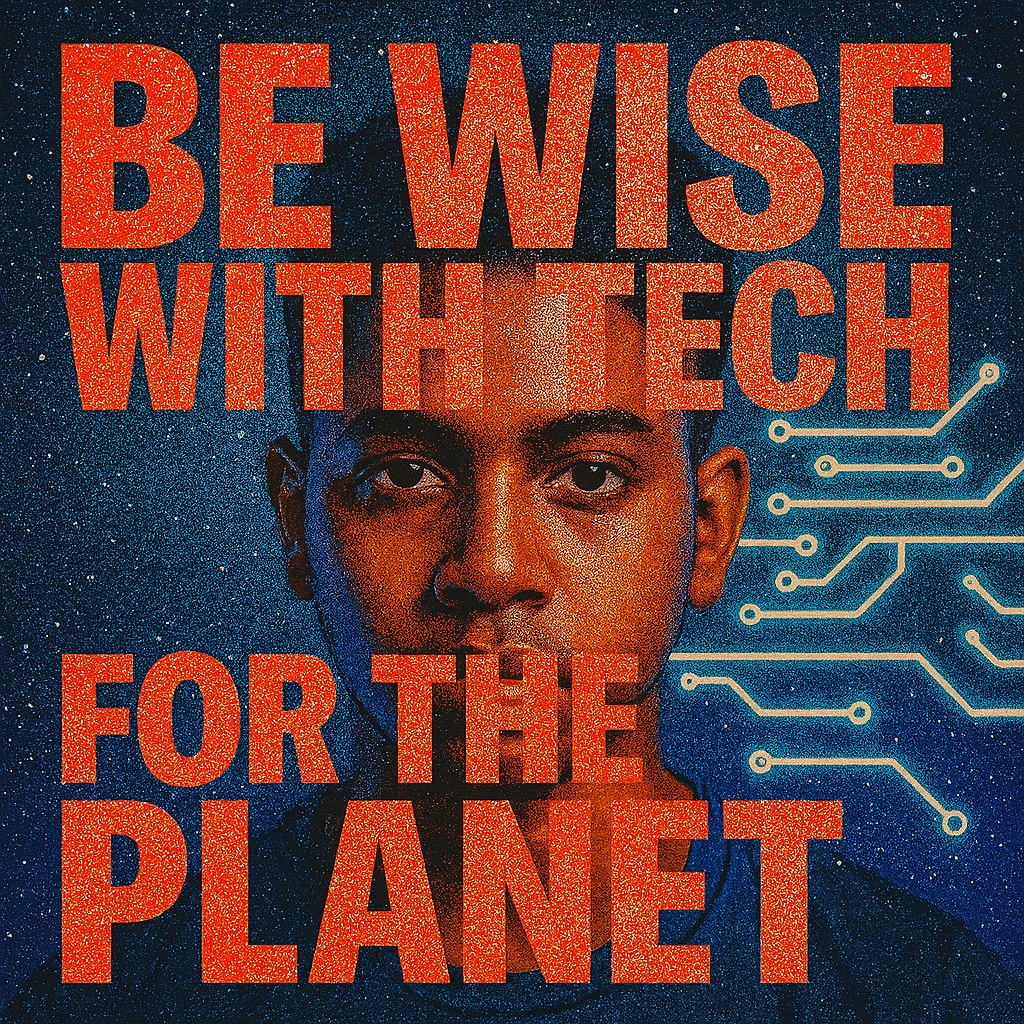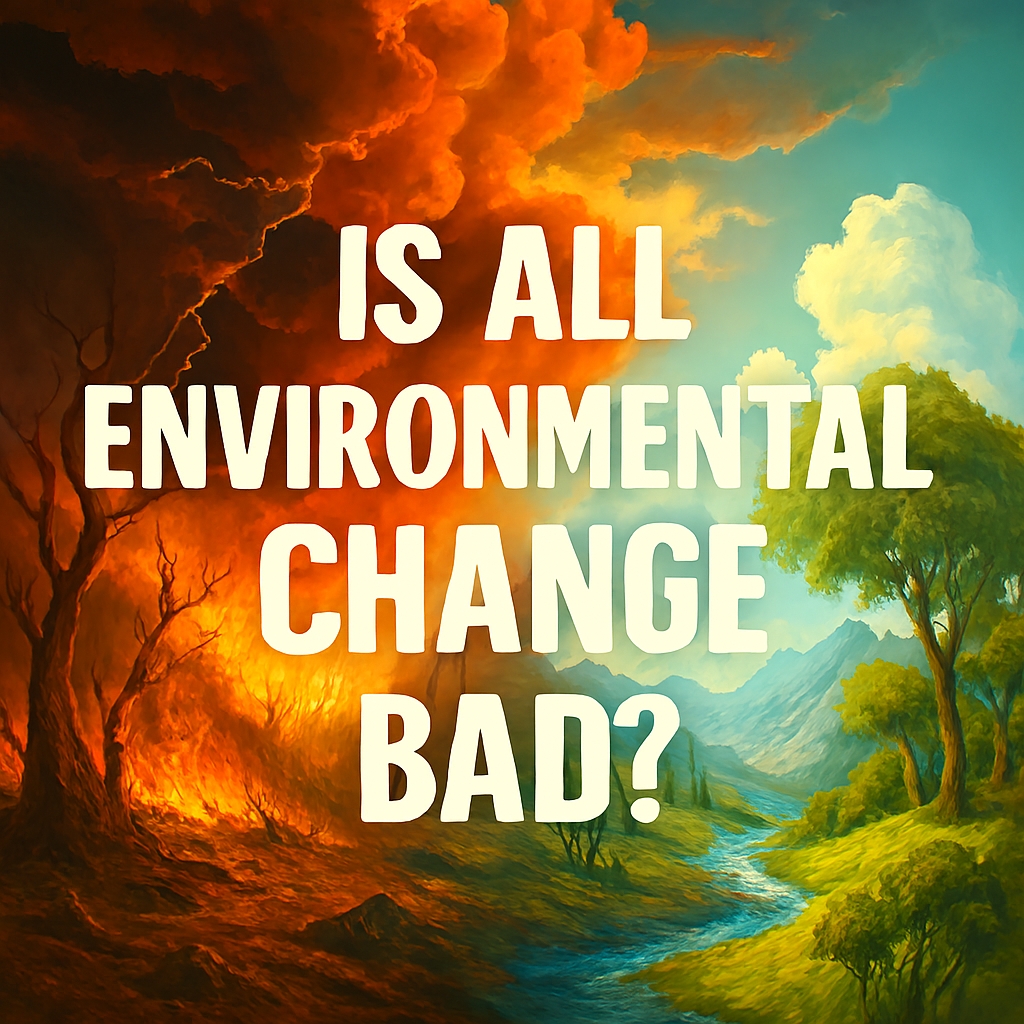Environment Technology Beyond 2025
Environment Technology Tech Culture
Powerful Tool for Technological Ecological Futures
Environment Technology is often framed as either the villain or the savior of the environmental story. It powers our cities, connects our lives, and enables scientific breakthroughs — yet it also extracts, pollutes, and consumes. The truth is more complex. Technology is not inherently good or bad; it is shaped by the systems, values, and intentions behind it. From satellites tracking deforestation to data centers consuming vast energy, the relationship between tech and ecology is layered and evolving.
Environmental impact is rarely visible at the surface level. A smartphone may seem sleek and harmless, but its creation involves mining, manufacturing, and global logistics. Likewise, a solar panel may reduce emissions but still rely on rare earth materials extracted from fragile ecosystems. The tension lies in how we define progress. Is it speed, convenience, or sustainability? Technology reflects our priorities. When those priorities shift, so does its impact.

Ecological Innovation
Extraction and Innovation
Every piece of technology begins with extraction. The materials that power our devices — lithium, cobalt, rare earths, and silicon — are pulled from the earth through processes that often leave scars. Mining operations can pollute water sources, destroy habitats, and displace communities. These impacts are rarely visible to the end user. A battery may look clean, but its origins are anything but. Lithium extraction, for example, depletes groundwater in arid regions, threatening local agriculture and biodiversity.
Cobalt mining has been linked to child labor and toxic exposure in parts of the Democratic Republic of Congo. Rare earths, used in wind turbines and electronics, generate radioactive waste during processing. Even silicon, the backbone of solar panels and microchips, requires energy-intensive refinement. Innovation is not neutral. It carries ecological weight. The challenge is not just to invent — but to invent responsibly. Ethical sourcing, circular design, and transparent supply chains are essential. Without them, green technologies risk replicating the harms they aim to solve. Extraction is the hidden cost of innovation. A sustainable future demands that we make it visible.
Energy Use and Efficiency
Technology consumes energy — often invisibly. Data centers, cryptocurrency mining, and streaming platforms require vast amounts of electricity to operate. Even cloud storage has a carbon footprint, despite its intangible nature. The global digital infrastructure is growing rapidly, and with it, energy demand. Yet technology also enables efficiency. Smart grids optimize electricity distribution, reducing waste and outages. AI-driven logistics streamline transportation, cutting fuel use and emissions. Precision agriculture uses sensors and algorithms to minimize water and fertilizer use.
These innovations show that technology can reduce environmental impact when designed with care. However, efficiency must be measured against equity and scale. A smart city may reduce emissions locally while outsourcing pollution elsewhere. Energy savings in one sector can be offset by growth in another. The rebound effect — where efficiency leads to increased consumption — is real. To truly benefit the environment, efficiency must be paired with restraint. Technology should not just do more with less; it should help us redefine what “more” means. Energy use is not the enemy — but unchecked growth is. Responsible design starts with asking not just how, but why.
Surveillance and Stewardship
Technology has transformed environmental monitoring. Satellites now track deforestation in real time, offering data that was once impossible to gather. Drones survey wildlife populations and illegal logging sites with precision. Sensors detect air and water pollution, alerting communities before harm escalates. These tools offer unprecedented visibility into ecological systems. They enable early intervention, policy enforcement, and public awareness. Stewardship becomes more actionable when data is accessible. However, surveillance is not without risk. Data can be misused, misinterpreted, or withheld.
Communities may be monitored without consent, raising ethical concerns. The line between stewardship and control is thin. Technology must be deployed with transparency and accountability. Indigenous knowledge and local expertise should guide its use. Stewardship is not just about seeing — it’s about listening. When technology amplifies marginalized voices, it becomes a tool for justice. When it silences them, it becomes a weapon. Surveillance must serve the ecosystems it observes — not the institutions that fund it.

Digital Waste and Invisible Pollution
The digital world may seem weightless, but it leaves a heavy footprint. Every email, photo, and streamed video is stored on physical servers that consume energy and generate heat. These data centers require cooling systems, backup power, and constant maintenance — all of which contribute to environmental degradation. E-waste is another growing concern. Discarded phones, laptops, and smart devices contain toxic materials that leach into soil and water when improperly disposed. Recycling rates remain low, and many devices are designed for obsolescence rather than longevity.
Planned obsolescence fuels consumption and waste. Devices are often sealed, glued, or encrypted to prevent repair. This creates a cycle of disposal and replacement that benefits manufacturers but harms ecosystems. Informal e-waste recycling in developing countries exposes workers to hazardous chemicals. Mercury, lead, and cadmium are common in circuit boards and batteries. These substances can cause neurological damage and contaminate water supplies. The illusion of digital cleanliness masks a complex web of extraction, energy use, and waste. To reduce digital pollution, we must rethink design, ownership, and disposal. Repairability, modularity, and extended warranties are part of the solution. Digital waste is not virtual — it’s physical, persistent, and growing.
Table – Environmental Impact of Digital Infrastructure
| Component | Hidden Environmental Cost | Long-Term Risk |
|---|---|---|
| Data Centers | High electricity and water usage | Carbon emissions, heat pollution |
| Cloud Storage | Server maintenance and cooling | Energy demand growth |
| Streaming Services | Bandwidth and server load | Increased fossil fuel dependency |
| Smartphones | Rare earth extraction, short lifespans | Toxic e-waste |
| Laptops/Tablets | Non-repairable design, battery degradation | Landfill overflow, chemical leaching |
| Smart Devices | Constant updates, planned obsolescence | Resource depletion, disposal issues |
Automation and Ecological Displacement
Automation promises efficiency, but it also reshapes ecosystems. Agricultural robots can reduce pesticide use, but they may also displace traditional farming practices. Self-driving vehicles could reduce traffic emissions, yet they require massive data processing and rare materials. Automated systems often prioritize productivity over ecological nuance. In manufacturing, robotic assembly lines reduce human error but increase energy consumption. Warehouses powered by AI logistics may optimize delivery routes while expanding urban sprawl. Automation in fisheries can monitor stocks, but it may also accelerate overharvesting. The ecological consequences of automation are rarely discussed.
Machines do not understand biodiversity, cultural heritage, or seasonal rhythms. They follow algorithms — not ethics. When automation replaces human stewardship, something vital is lost. Ecological displacement occurs when technology overrides local knowledge. Indigenous land practices, for example, may be sidelined by satellite mapping. Automation must be guided by ecological intelligence, not just technical precision. Efficiency without empathy leads to imbalance. The future of automation depends on how we define progress — and who gets to decide.
Table – Ecological Trade-Offs of Automation
| Sector | Automation Benefit | Ecological Risk |
|---|---|---|
| Agriculture | Reduced pesticide use, precision irrigation | Soil degradation, monoculture expansion |
| Transport | Optimized routes, lower emissions | Increased resource extraction |
| Manufacturing | Faster production, fewer errors | Higher energy demand, material waste |
| Fisheries | Stock monitoring, reduced bycatch | Overharvesting, loss of local control |
| Forestry | Remote sensing, automated planting | Biodiversity loss, habitat fragmentation |
| Urban Planning | Smart zoning, traffic flow optimization | Gentrification, ecological oversimplification |
Predictive Systems Ecological Innovation Beyond 2025
Ecological Modeling and Predictive Systems
Technology beyond 2025 enables us to model ecosystems in ways never before possible. Climate simulations, biodiversity mapping, and predictive analytics offer insights into future scenarios. These models help policymakers anticipate droughts, floods, and species decline. However, models are only as good as their inputs. Incomplete data, biased assumptions, and limited scope can lead to misleading conclusions. Predictive systems may prioritize economic outcomes over ecological integrity. A model that maximizes crop yield might ignore soil health or pollinator survival. Ecological complexity resists simplification. Feedback loops, tipping points, and emergent behaviors are difficult to capture.
Still, modeling remains a powerful tool. It allows us to test ideas before implementing them. When paired with field data and community input, models become more accurate and ethical. Transparency is key — users must understand what a model includes and excludes. Predictive systems should support decision-making, not replace it. The goal is not to simulate nature perfectly, but to respect its unpredictability. Ecological modeling is a mirror — one that reflects both our knowledge and our blind spots.

Symbolic Tech Culture and Environmental Blind Spots
Technology is not just functional — it’s symbolic. Devices carry cultural meaning, shaping identity, status, and aspiration. A sleek phone or electric car may signal progress, intelligence, or environmental concern. Yet these symbols often mask deeper contradictions. Green branding can obscure extractive supply chains. Minimalist design may hide maximalist impact. Tech culture celebrates innovation but rarely interrogates its ecological cost. The language of disruption and scalability often ignores sustainability. Silicon Valley aesthetics prioritize speed and novelty over repair and longevity.
Environmental technology blind spots emerge when symbolism overrides substance. A product marketed as “clean” may still rely on fossil fuels or exploitative labor. The tech industry’s obsession with the future can detach it from present realities. Climate change is not a distant problem — it’s embedded in every device we use. Symbolic resistance is possible, but it requires cultural shifts. Repair cafés, open-source design, and degrowth movements challenge dominant tech narratives. These alternatives reframe technology as stewardship, not spectacle. To change behavior, we must change meaning. Environmental clarity begins with cultural honesty.
Ethical Design and Systemic Accountability
Design is not neutral — it encodes values, priorities, and assumptions. Ethical design considers not just user experience, but ecological consequence. A product’s shape, lifespan, and repairability affect its environmental footprint. Fast design often leads to fast disposal. Systemic accountability means tracing impact across the entire lifecycle — from extraction to end-of-life. This includes energy use, labor conditions, and digital waste management.
Designers must ask: who benefits, who pays, and who is left out? Inclusive design integrates diverse perspectives, especially from communities most affected by environmental harm. Transparency is essential. Users should know what materials are used, where they come from, and how they can be reused. Ethical design also means resisting planned obsolescence. Products should be built to last, adapt, and evolve. Modularity, open standards, and repair access are key. Accountability is not just technical — it’s moral. When design reflects ecological intelligence, technology becomes a tool for restoration. Ethics must be embedded, not optional. The future of tech depends on how deeply we care about its consequences.
Table – Principles of Ethical Environmental Design
| Principle | Ecological Benefit | Design Implication |
|---|---|---|
| Modularity | Reduces waste, enables repair | Devices built with replaceable components |
| Transparency | Builds trust, informs choices | Clear labeling of materials and sourcing |
| Longevity | Minimizes resource extraction | Durable materials and software support |
| Inclusivity | Amplifies marginalized voices | Co-design with affected communities |
| Circularity | Prevents landfill overflow | Reuse, refurbish, and recycle pathways |
| Open Standards | Encourages innovation and access | Interoperable systems and shared protocols |
Beyond 2025
Future Pathways and Ecological Intelligence
Technology must evolve — not just in capability, but in consciousness. Ecological intelligence means designing with nature, not against it. This includes biomimicry, regenerative systems, and low-impact materials. It also means slowing down. Not every problem requires a faster processor or a smarter algorithm. Sometimes the solution is less — not more. Future pathways must prioritize resilience over convenience. This includes decentralized energy, community-owned infrastructure, and transparent governance. Ecological intelligence values feedback, adaptation, and humility.
It recognizes that ecosystems are complex, unpredictable, and sacred. Technology should support — not dominate — these systems. The future is not a single trajectory, but a branching network of choices. Each design decision shapes that network. We must choose pathways that honor life, diversity, and interdependence. Ecological intelligence is not a trend — it’s a survival strategy. The question is not whether technology will change — but whether we will guide that change with care.
Behavioral Feedback and Algorithmic Influence
Technology doesn’t just reflect behavior — it shapes it. Algorithms determine what we see, what we buy, and how we think about the environment. Social media platforms amplify certain narratives while suppressing others. Eco-conscious content may trend briefly, but outrage and novelty often dominate. This creates a feedback loop where environmental urgency is diluted by distraction. Algorithms are designed to maximize engagement, not ecological awareness. They reward speed, emotion, and repetition — not depth or nuance. Behavioral nudges embedded in apps can encourage sustainable choices, but they can also manipulate attention.
A carbon footprint tracker may inspire change, or it may induce guilt and avoidance. The design of digital platforms influences how people perceive environmental responsibility. When sustainability is gamified, it risks becoming superficial. Yet when it’s embedded in everyday systems, it can shift norms. Algorithmic influence is subtle but powerful. It shapes not just what we do, but what we believe is possible. To harness this power ethically, designers must prioritize ecological literacy and emotional resilience. Technology should guide behavior toward care — not just consumption.
Table – Algorithmic Effects on Environmental Behavior
| Platform Type | Positive Influence | Negative Influence |
|---|---|---|
| Social Media | Spreads awareness, builds movements | Amplifies misinformation, shortens attention span |
| Shopping Apps | Highlights eco-friendly products | Promotes overconsumption, greenwashing |
| Navigation Tools | Optimizes fuel-efficient routes | Encourages car dependency |
| Fitness Trackers | Promotes outdoor activity | Increases device turnover |
| Smart Home Systems | Reduces energy use | Relies on constant connectivity |
| News Aggregators | Surfaces climate reporting | Filters out dissenting or complex views |
Tech Equity and Global Disparities
Technology’s environmental impact is not evenly distributed. Wealthy nations benefit from innovation while poorer regions bear the cost. Mining, manufacturing, and disposal often occur in places with weak environmental protections. Communities near extraction sites face pollution, displacement, and health risks. Meanwhile, consumers in affluent areas enjoy sleek devices and clean energy.
This imbalance reflects global inequity. Tech equity means ensuring that environmental benefits and burdens are shared fairly. It requires ethical sourcing, fair labor, and inclusive design. Access to clean technology should not depend on geography or income. Solar panels, water filters, and digital tools must be affordable and adaptable. Localization matters — solutions must fit cultural and ecological contexts. Global disparities also affect data access and representation. Many regions lack the infrastructure to monitor or respond to environmental threats. Without equity, technology reinforces injustice. With it, tech becomes a bridge — not a barrier. Environmental progress must be global, not selective.
Table – Global Disparities in Tech-Driven Environmental Impact
| Region Type | Common Role in Tech Lifecycle | Environmental Burden | Access to Benefits |
|---|---|---|---|
| Resource-Rich Poor | Extraction and raw material supply | Pollution, habitat loss, labor exploitation | Limited access to clean tech |
| Manufacturing Hubs | Assembly and production | Industrial waste, energy demand | Moderate access, often export-focused |
| Affluent Consumers | End-use and disposal | E-waste generation, energy consumption | High access to innovation and efficiency |
| Remote Communities | Minimal tech infrastructure | Vulnerable to climate impacts | Low access to monitoring and adaptation |
| Urban Megacities | High tech density and usage | Heat islands, digital waste | Mixed access, high consumption |
| Indigenous Lands | Targeted for extraction or conservation | Displacement, cultural erasure | Often excluded from design decisions |
Closing Reflections
Technology is not destiny — it’s design. Its environmental impact depends on how we build, use, and regulate it. Every device, algorithm, and system carries ecological consequences. These consequences are shaped by culture, economics, and ethics. The goal is not to reject technology, but to reimagine it. We must move beyond convenience and novelty toward care and accountability.
This means designing for repair, transparency, and resilience. It means listening to communities most affected by environmental harm. It means embedding ecological intelligence into every layer of innovation. The future of technology is not just faster or smarter — it’s wiser. Environmental stewardship must be built into the code, the hardware, and the culture. We are not passive users — we are co-creators. The tools we build reflect the world we want. Let that world be just, regenerative, and alive. Let technology serve life — not consume it.
Conclusion
Technology is not separate from nature — it’s embedded in it. Every device, every algorithm, every system we build either deepens our ecological crisis or helps us heal it. The choice is not between progress and preservation, but between careless acceleration and conscious design. We must stop treating innovation as inevitable and start treating it as intentional.
The tools we create reflect the values we hold. If those values prioritize extraction, speed, and control, then technology will continue to harm the planet. But if we embed empathy, transparency, and ecological intelligence into every layer of design, then technology can become a force for regeneration. This requires more than technical skill — it demands cultural humility, ethical courage, and systemic accountability. It means listening to communities most affected by environmental harm.
It means designing for repair, not replacement. It means slowing down, asking better questions, and refusing to outsource responsibility. The future of technology is not just about what we can build — it’s about what we choose to protect. Let that choice be rooted in care. Let it be bold, inclusive, and alive. Because the planet doesn’t need smarter machines — it needs wiser humans.
Join the Discussion
What technologies do you believe are helping — or hurting — the planet most right now? How can designers, developers, and users work together to embed ecological intelligence into everyday tools?
#EcologicalIntelligence #TechForPlanet #SustainableDesign #DigitalWaste #ClimateJustice #EthicalInnovation #GreenTech #EnvironmentalAccountability #RepairNotReplace #FutureByDesign













Magical Precious Saving Our Environment Psychology
[…] storytelling, fieldwork, and systems thinking. It must be emotional, not just intellectual. Ecological literacy is not a luxury—it’s survival knowledge. And survival begins with […]